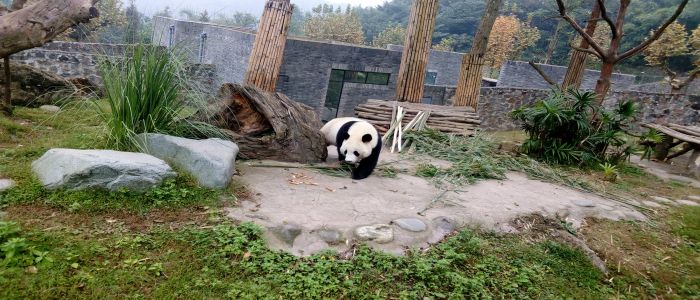Wildlife Conservation: Where ‘Pandas’ Fetch Fortunes!
- Par Nicolas MBA (intern)
- 16 nov. 2016 18:45
- 0 Likes

The rare animal specie attracts millions of tourists to conservation zones in Sichuan province and serves as impressive source of revenue for the high-tech prone province of China.
Conserving wildlife especially endangered specie which may not be given utmost importance elsewhere has proven to be a great economic purveyor in Sichuan Province of China. Talk of Dujiangyan Base of China’s Conservation & Research Centre for Giant Panda and tourists who throng the area everyday would readily narrate their encounters with the rare animal. Experts say over 80 per cent of the world’s pandas are in conservation zones in Sichuan.
And the meticulous conservation efforts of the centre consisting in rescuing, feeding and management of over 40 giant pandas keep the animals healthy and thus attractive to tourists. The peaceful creature with a fine distinctive black and white coat is revered in Dujiangyan Base of China’s Conservation & Research Centre and many Chinese liken the animal to “national treasure and a symbol of Chinese friendship to the rest of the world.” The rarest member of the bear family, wildlife experts say, live mainly in bamboo forests high in the mountains where they subsist almost entirely on bamboo.
The animal invariably forms a core part of the rich tourism industry of Sichuan province. Thanks to that and other cultural and historical sites in the province like the Dujiangyan Irrigation System, Mounts Emei and Qingcheng as well as the Ancient Shu civilization with irresistible Sichuan Hot Pot cuisine, the province is easily likened to a tourism haven in China. This is more so as the province equally boasts of five world Natural and Cultural Heritages comprising Jiuzhai Valley Huanglong Scenic Area, also hometown of giant pandas.
As the second most populated province in China (over 91 million) after Guangdong, these tourism sites...
Cet article complet est réservé aux abonnés
Déjà abonné ? Identifiez-vous >
Accédez en illimité à Cameroon Tribune Digital à partir de 26250 FCFA
Je M'abonne1 minute suffit pour vous abonner à Cameroon Tribune Digital !
- Votre numéro spécial cameroon-tribune en version numérique
- Des encarts
- Des appels d'offres exclusives
- D'avant-première (accès 24h avant la publication)
- Des éditions consultables sur tous supports (smartphone, tablettes, PC)














Commentaires